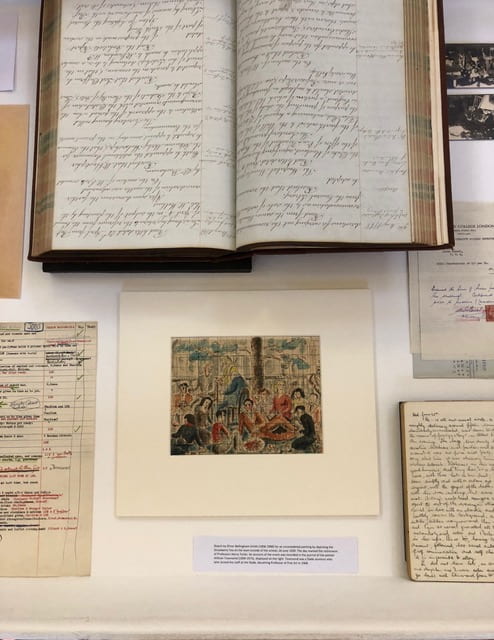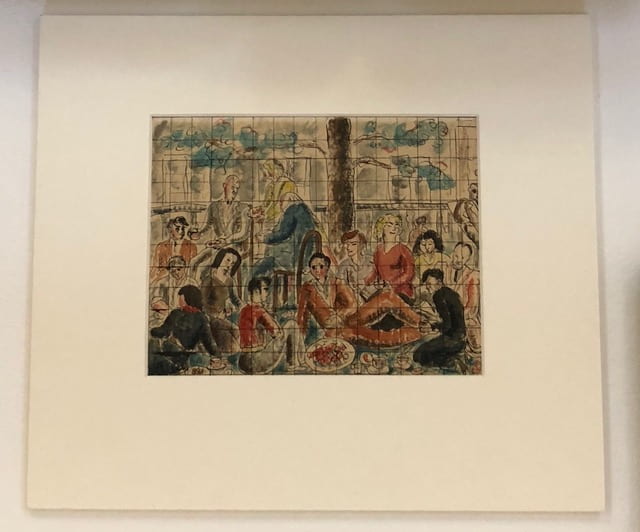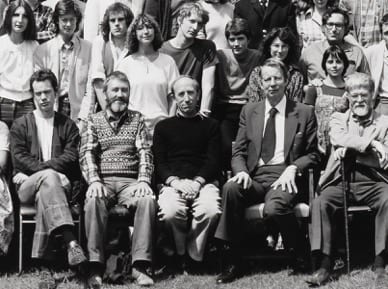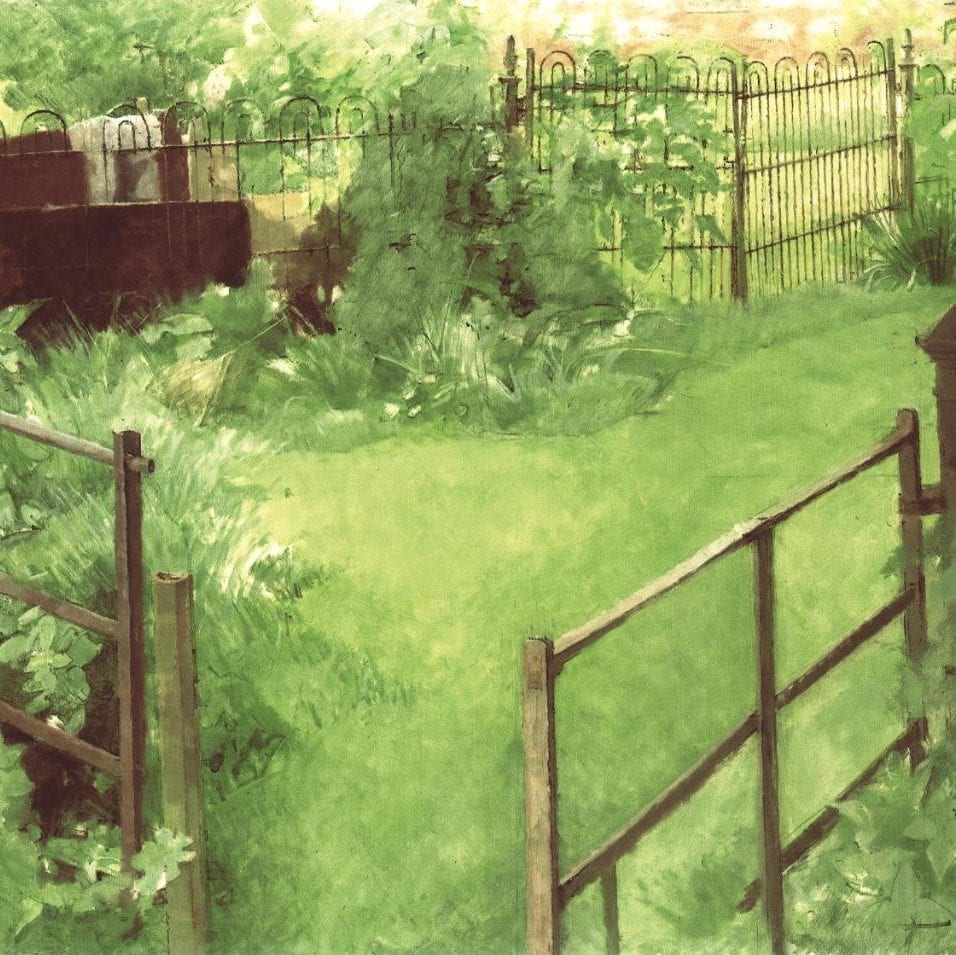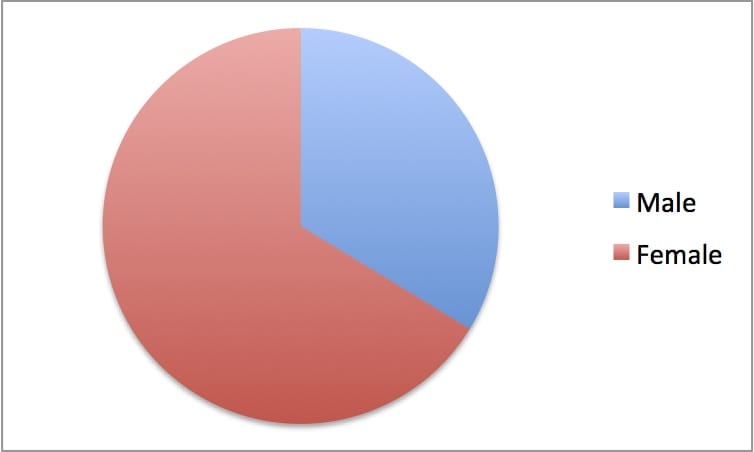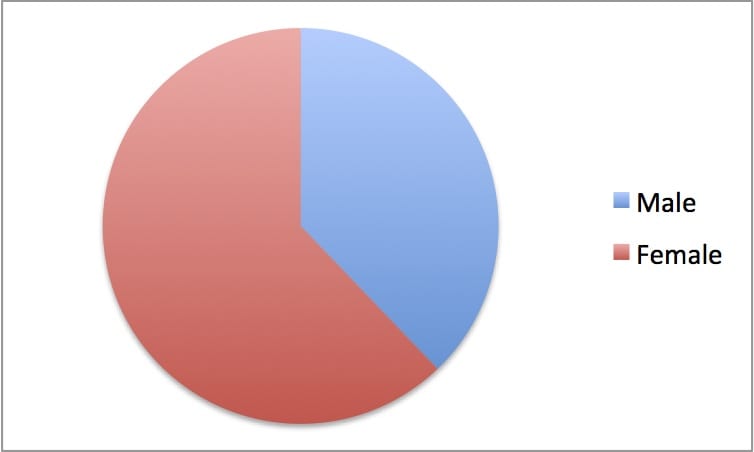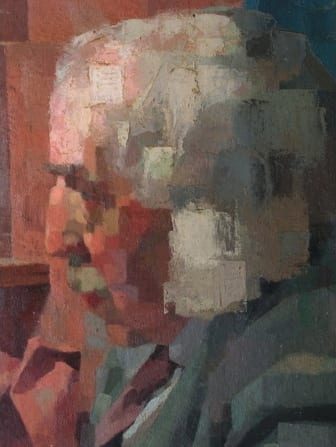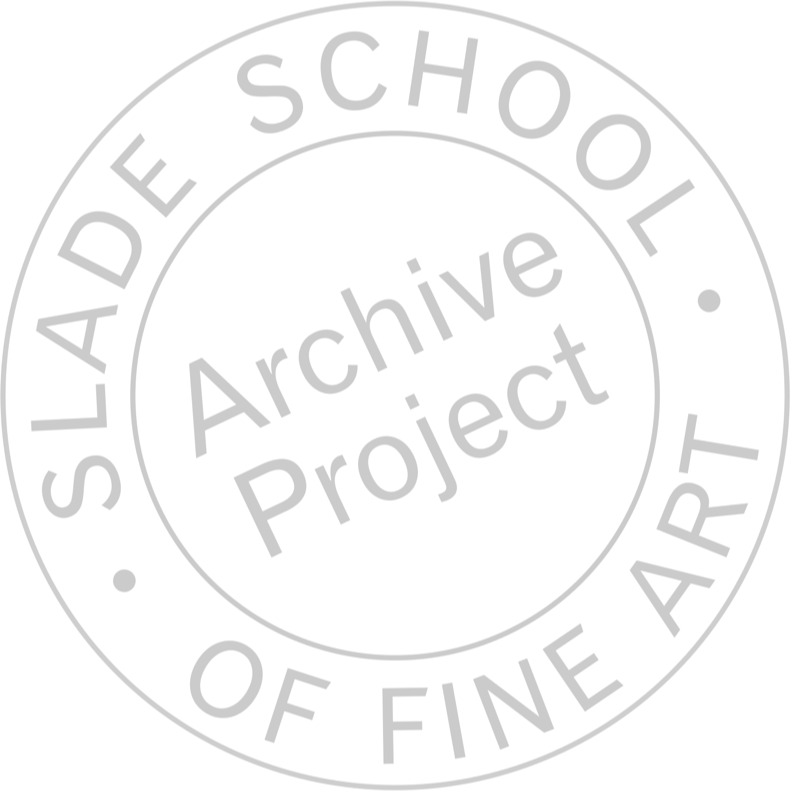Slade Archive Project Phase II
By Slade Archive Project, on 20 April 2020
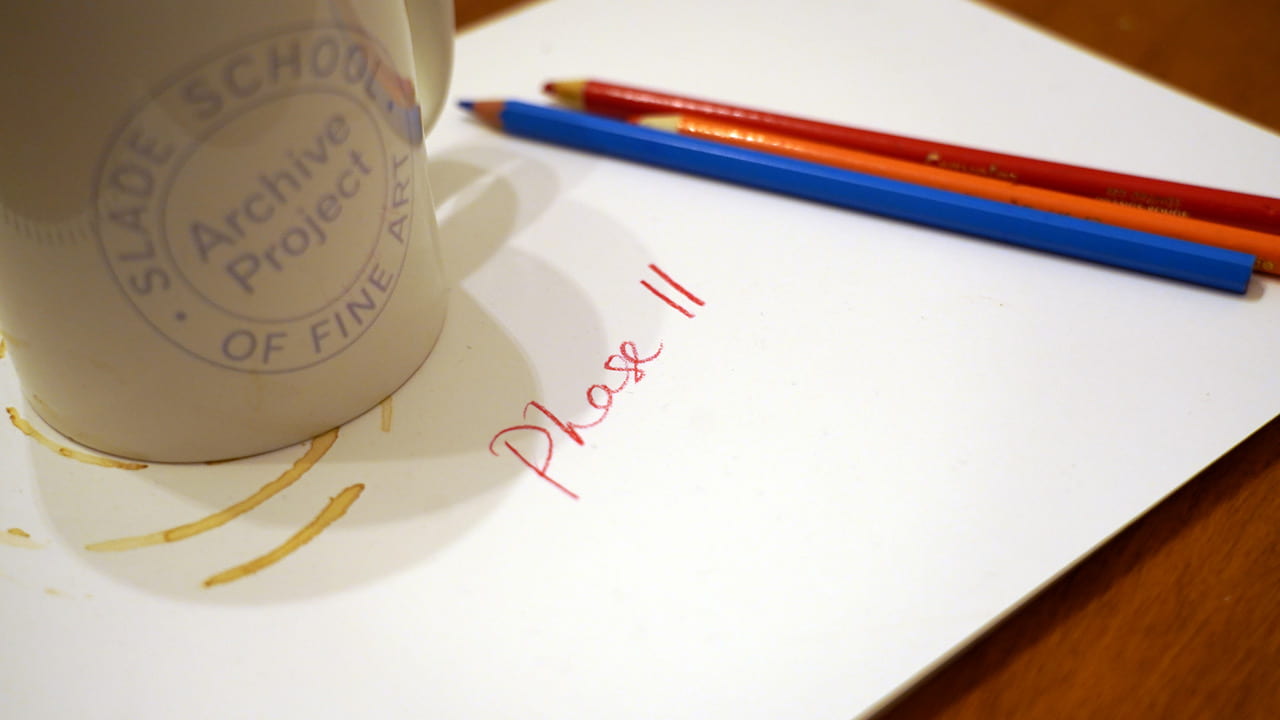 It may seem that things have been quiet with the Slade Archive Project – even more so now, given the current Covid-19 crisis – but we have been busy working on a number of exciting developments and will continue to do so working remotely in the coming weeks.
It may seem that things have been quiet with the Slade Archive Project – even more so now, given the current Covid-19 crisis – but we have been busy working on a number of exciting developments and will continue to do so working remotely in the coming weeks.
Last year we embarked on a new phase of the project which looks towards the school’s 150th anniversary in 2021. After reflecting on the various activities undertaken in Phase I, we have developed a number of aims for Phase II. We are approaching this milestone as a chance not only to celebrate the Slade and its alumni, but also to:
- enhance and challenge known histories of the school and its legacies, through both internal and external research, and with a particular focus on transnational scholarship and international knowledge exchange
- continue to develop, showcase and improve access to Slade archive collections, in part through digital technologies
- promote cross-disciplinary engagement with the Slade’s archive collections, including, but not limited to, those emerging through fine art practice
- use the Slade’s 150th anniversary as a springboard to explore different approaches to engaging with institutional histories
- continue to pilot different ways to use, enhance, create and disseminate archival resources
- foster collaboration across different disciplinary boundaries and through internal and external partnerships
- integrate teaching and learning opportunities, public programming and outreach activities with research activities
- and disseminate our findings through open access platforms.
Current areas of activity are:
- Transnational Slade (Phase II), in collaboration with the ‘Slade, London, Asia’ Research Group, part of ‘London, Asia’ research project led by the Paul Mellon Centre, which includes a current pilot activity with ResearchSpace, British Museum
- Slade Film Department (1960-1984), ‘Materiality, Archives and the Slade at the Nexus of Art School Filmmaking’ (working title) research project led by Brighid Lowe and Henry Miller
- The curation and cataloguing of Slade archive collections, in collaboration with UCL Library Special Collections and UCL Department of Information Studies
- William Townsend Journals digital project (with UCL Library Special Collections)
- Slade Photo collection cataloguing project (with UCL Library Special Collections)
- Tracing artistic heritages through the architectural fabric of the Slade
Vital cataloguing and conservation activities underpin these activities and research aims. The wonderful team at UCL Library Special Collections have been hard at work reappraising and upgrading the catalogue records for the Slade archive collection. This is an ongoing, collaborative effort to make what is an eclectic and disparate collection of records more accessible for researchers. We are grateful for the work of the UCL Library Special Collections team – Sarah Aitchison, Katy Makin, Kathryn Meldrum, Colin Penman, Rebecca Sims, Robert Winckworth, Angela Warren-Thomas and Steve Wright – who have together undertaken this mammoth task. UCL Library Digital Collections now has a dedicated area for digitised Slade Archive materials. We hope to add more records in the months to come.
From 2015-2018, the UCL Art Museum’s ‘Spotlight on the Slade’ Project also made great headways in cataloguing Slade collections. This research project was supported by the Paul Mellon Centre for Studies in British Art, and sought to increase access to UCL Art Museum’s Slade Collections through research, cataloguing, digitisation, collaboration and public engagement. As part of this research, colleagues at the Museum discovered that approximately 45% of works in UCL Art Museum’s collection are by women artists. This is an astonishing statistic: typically, permanent collections in Europe and the US contain between 3-5% of works by women.
We have also updated guidelines for researching the Slade archive collections, and welcome additions to our growing bibliography on the topic of the Slade and its many histories.
In 2018, we marked the 150th anniversary of the death of the school’s namesake and founding father, Felix Slade (1788-1868). Slade, a lawyer and notable collector of glass, engravings, books and bindings, bequeathed endowments for the founding of three Slade Professorships of Fine Arts: at Oxford, Cambridge and University College London. Funds for a studentship were also bequeathed for UCL, and which formed the foundation to establish a new School of Fine Art for the teaching of professional artists, which opened three years later, in 1871. To coincide with this commemoration, UCL Library Special Collections digitised the Slade foundational papers which are now available online as part of UCL Library Digital Collections. As the papers reveal, a central idea behind the Slade school was its location within the university, and for much of its existence, the Slade shared its site with other UCL departments, including chemistry and physiology. Edwin Field (1804-1871), a lawyer, translated the terms of the bequest, and promoted the idea of establishing ‘a school of art in connection with a university, with a view to the collateral advantages that such an alliance could afford’.
A drinks reception was also held in Felix Slade’s honour, harking back to an earlier tradition of the annual Slade strawberry tea, with Slade staff, students, alumni and supporters congregating for berries and bubby in the UCL portico. We were lucky enough to have three descendants of Felix Slade join us, who generously shared their family stories and documentation with those wanting to know more. A small exhibition was also set up in the adjacent UCL Library Flaxman Gallery, showcasing some gems from the Slade archives.
The centre item featured here is by Elinor Bellingham-Smith (1906-1988), a preparatory sketch for an uncompleted painting depicting the Strawberry Tea on the lawn outside of the school on 26 June 1930.
This day marked the retirement of Professor Henry Tonks. An account of the event was recorded in the journal of the Bellingham-Smith’s friend and fellow Slade student, the painter William Townsend (1909-1973). His journals are in the care of UCL Special Collections.
The last official appearance of Tonks was an impressive and tragically simple piece of staging. At the end of his remarks he stood up and saying “I do not like saying goodbye, so there will be no official leave taking”, walked quietly with his jerky [?] walk to the door, leaving the long line of the staff, still in their places, whilst we clapped frenziedly, and for once, with real feeling and appreciation. Strawberry tea on the lawn. Tonks and Steer and Daniels from the National Gallery sit on chairs, at the edge of the crowd […] other visitors smiling and joking and drinking tea, and eating strawberries and cream. Tonks in his grey suit, looking a grey and tired, but not unhappy, old man.
Journal of William Townsend, 26 June, 1930. UCL Special Collections
William Townsend was also a Slade alumnus, who later joined the staff at the Slade, becoming Professor of Fine Art in 1968. This sketch was donated to the school by Townsend’s daughter, Charlotte Townsend-Gault, in 2017.
The London Film Society programme, 1937
By Slade Archive Project, on 10 May 2017
EVENT: Record of War: Film, History and the Art School
Saturday 10 June | 13:00-17:00 | Birkbeck Institute of the Moving Image
This unique event offers a reconstruction of a seminal London Film Society programme of 1937. The original event was restaged in 1969 by Thorold Dickinson, Britain’s first professor of film (at UCL’s Slade School of Fine Art), and the director of ‘Gaslight’. It ‘dovetailed’ alternate reels from Italian and Soviet films of the recent Fascist conquest of Abyssinia. Titled ‘Record of War’, the original screening was a ground-breaking attempt to deconstruct official ‘alternative facts’ through the direct material confrontation of two radically opposed perspectives on the same events: one a glorification of militarism, one documenting atrocities which the other left out. ‘Our fashionable Sunday audience,’ Dickinson recalled, ‘with their broad brims and capes and a capacity for chatter, drifted out into Regent Street in dead, awed silence.’
The event’s (re)reconstruction in 2017, hosted at Birkbeck Institute of the Moving Image and provides a timely opportunity to reflect on the long history of ‘fake news’. Two projectionists will make a live montage of the films on 35mm, followed by a panel discussion which explores the films’ new meanings in a postcolonial perspective. Discussions will be led by Sight and Sound critic Henry K. Miller, an Honorary Research Associate at UCL Slade School of Fine Art. This event has been organised by Henry K. Miller and Brighid Lowe, Senior Lecturer in Fine Art at the Slade.
The event is free but tickets need to be booked via Birkbeck/eventbrite.
http://www.bbk.ac.uk/events-calendar/ucl-festival-of-culture-record-of-war-film-history-and-the-art-school
Remembering Patrick George
By Slade Archive Project, on 3 April 2017
“He had the ability to capture a moment but made that moment stand for all time. Many, many artists have that ambition but very few achieve it. He did. His painted leaves represent themselves as well as the entire shape of the tree. He understood his landscapes as much as he must have loved them. And what I feel in front of his work is love entirely devoid of sentimentality.”
Tess Jaray, Patrick George memorial event, 8 March, 2017
Patrick George (1923-2016), painter, teacher and former Slade Professor, was remembered recently at a memorial event held at UCL on the 8th of March. Friends, Slade alumni and former colleagues came together for an evening of presentations and recollections. Speakers included Tess Jaray, Jo Volley, Professor Emeritus Bruce McLean, Professor Sharon Morris, Brian Knox, Professor Andrew Stahl, Catherine Lampert, Andy Pankhurst, Kenneth Cranham, and Slade Director and Professor Susan Collins.
Born in Manchester in 1923, Patrick George attended Edinburgh College of Art (1941-2) and Camberwell School of Art (1946-9), where he studied under William Coldstream. In 1974, he joined the teaching staff at the Slade and in 1985 became Slade Professor, a post he held until his retirement in 1988.
Filmmakers Hero Johnson and Andrew Warrington made a study of his work and life as he approached his ninetieth birthday. Excerpts from the resulting documentary, Patrick George: A Likeness (Shoehorn Films, 2013), were screened as part of the evening and the entire event was recorded for posterity.
Patrick George’s legacy will also be carried on in the form of a memorial scholarship established in his name. The scholarship fund will help enable a graduate student to study at the Slade regardless of financial circumstance by contributing towards their tuition fees. If you would like to donate to the fund and support our aim of continuing to enable the very best students, on merit, to be able to take up their places at the Slade, please visit this page.
The Slade Session, and Beyond
By Slade Archive Project, on 5 February 2016
Guest post by Dr Amara Thornton, British Academy Postdoctoral Research Fellow, Institute of Archaeology, UCL
The Slade School of Fine Art has a world famous reputation as a venerable art training institution. I’m currently investigating two early Slade artists who made a lasting contribution to archaeology: Jessie Mothersole and Freda Hansard. I’ve been reading Transnational Slade articles and realised that the experiences of these two women feed into this theme, providing an early example of the School’s international impact, links between different fields of study, and the role of UCL (and the Slade in particular) in providing opportunities for women.
As part of my research I’ve examined UCL’s Session Fees books, a rich resource for disciplinary and institutional history at UCL. These books record payments of students’ fees over the course of an academic year (session), extending from October to June, and provide an intriguing snapshot of the student body in each UCL Department at a particular moment in time. UCL admitted both male and female students from the 1870s onwards. Jessie Mothersole (1874-1958) was a 17-year-old from Colchester when she entered the Slade for the 1891-1892 session, remaining until 1896.
She joined a significant number of women students taking classes at the Slade at that time. A quick gender analysis of the Slade students listed in the 1892-1893 session looks like this:
Jessie Mothersole’s artistic skill did not go unnoticed; she was awarded prizes (2nd class) in drawing from life and drawing from the antique in 1892. In 1893 she was awarded certificates in advanced antique drawing and figure drawing. These awards foreshadowed her career in illustration and writing.
Winifred “Freda” Hansard (1872-1937) studied at the Royal Academy Schools before she entered the Slade for the 1895-1896 session, remaining until 1897. Her work was later included in the Royal Academy’s Summer Exhibition. In 1899 she exhibited Isola dei Pescatori in Lago Maggiore and Medusa Turning a Shepherd into Stone, which was described in Hearth and Home as “a vigorous, dramatic picture…”. Her painting Priscilla was displayed at the Royal Academy in 1900 and Rival Charms in 1901.
In 1902 Freda re-entered UCL as a student in Egyptology under the leadership of Professor Flinders Petrie. As in the Slade a decade earlier, in the 1902-1903 session, the number of women Egyptology students surpassed that of men.
At this point Petrie was making annual journeys to Egypt to excavate ancient sites. Egyptology students were offered the opportunity to take part in Petrie’s excavations, and in 1902 Freda Hansard joined eight other team members at Abydos, a town and pilgrimage site north of Luxor. There her artistic skills were harnessed to record the inscriptions and scenes on the walls of the Osirieon, a special building for the worship of the Egyptian god Osiris, ruler of the Underworld.
The drawings she made with Egyptologist and UCL lecturer Margaret Murray, who directed the Osereion excavations with Petrie’s wife Hilda, were put on display at UCL alongside antiquities from Abydos in July 1903. Hansard returned to Egypt for the 1903/1904 season, joining Jessie Mothersole and Margaret Murray at the cemetery site of Saqqara – an hour’s train and then another hour’s donkey ride away from Cairo.
Jessie Mothersole used her camera to capture the setting of this transnational phase in her artistic life. Her photographs show the Saqqara landscape, ancient remains, excavation scenes and the Egyptian team working with them. These images were later published in an article entitled “Tomb Copying in Egypt” for the popular magazine Sunday at Home. The publication included two uncredited line drawings, probably done by Jessie herself, depicting the hut in which she, Freda and Margaret Murray lived on site and the Egyptian boy who brought them water every day.
The Petrie Museum has one photograph in their archive credited to Jessie Mothersole, taken in Luxor rather than Saqqara (fig 3). But the hand-written caption underneath hints at her eye for minute detail that permeates her article.
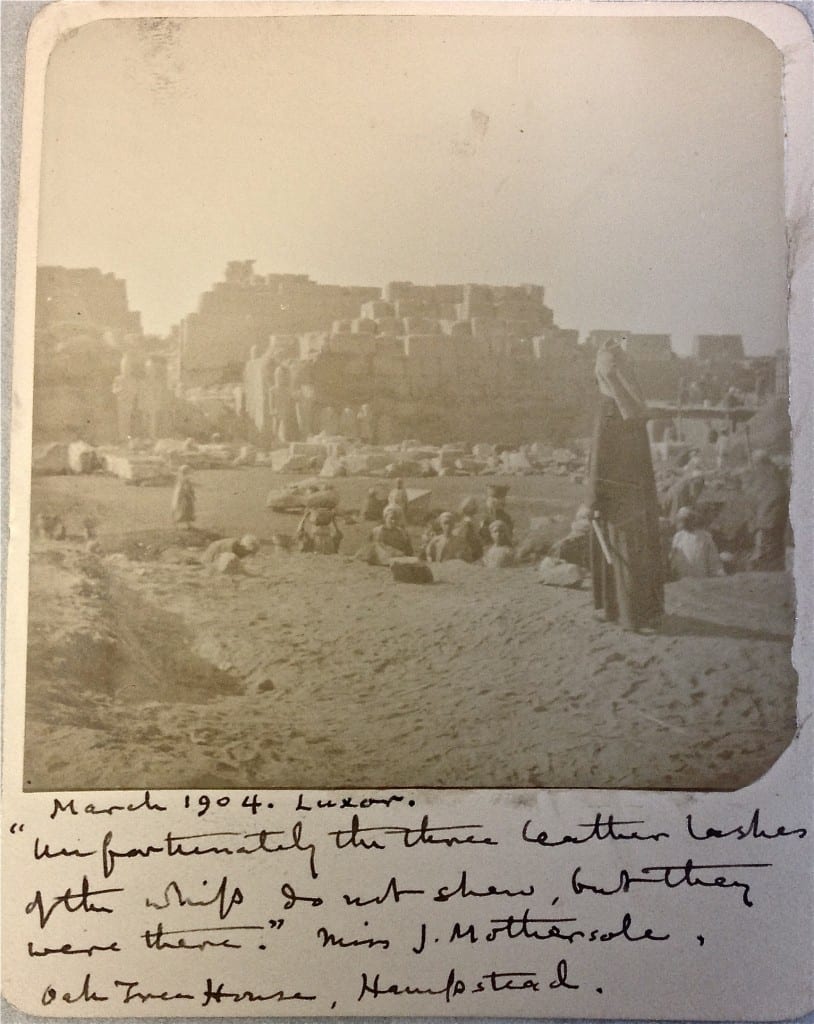
Fig. 3 This photograph is dated March, 1904. Its handwritten caption reads: “Unfortunately the three leather lashes of the whip do not show, but they were there.” Miss J. Mothersole, Oak Tree House, Hampstead. Courtesy of the Petrie Museum of Egyptology.
Jessie remained largely based in the UK thereafter, moving into book illustration and writing on British archaeology. Freda returned to Egypt for further work at Saqqara, and married former solicitor turned Egyptologist Cecil Firth in 1906. The Firths were mainly based in Egypt, barring the period of the First World War, and Freda Firth continued to contribute to archaeological illustration after her marriage. Excerpts published from her daughter Diana Firth Woolner’s 1926 diary reveal something of the Firths’ life in Egypt and the Anglo-American-Egyptian network at work. One particularly interesting entry describes Freda and Diana’s visit with artist/archaeologist (and former UCL Egyptology student) Annie Pirie Quibell to see Egyptian bread being made.
Freda Firth took advantage of the opportunities at UCL for intellectual expansion as a woman student and built a life for herself in Egypt. Her experiences there coloured the rest of her life as an artist, and give her a lasting transnational legacy. She and Jessie Mothersole were two of many women whose time at UCL affected the rest of their lives. I was happy to discover recently that this history is currently being explored through a new arts project – Kristina Clackson Bonnington’s The Girl at the Door. I think Jessie and Freda would approve.
References/Further Reading
Bierbrier, M. 2012. FIRTH, Winifred (Freda) Nest (nee Hansard) (1872-1937). Who Was Who in Egyptology 4th Revised Edition. pp. 191. London: Egypt Exploration Society.
Graves, A. 1905. The Royal Academy of Arts: A Complete Dictionary of Contributors and their work from its foundation in 1769 to 1904. Vol III. Eadie to Harraden. London: Henry Graves and Co. Ltd/George Bell & Sons.
Harte, N. & North, J. 2004. The World of UCL 1828-2004. London: UCL Press.
James, T. G. H. 1994. The Other Side of Archaeology: Saqqara in 1926. Egyptian Archaeology 5: 36-37.
James, T. G. H. 1995. The Other Side of Archaeology: Saqqara in 1926 (II). Egyptian Archaeology 7: 35-37.
Mothersole, J. 1908. Tomb Copying in Egypt. Sunday at Home. February. (pp. 345-351)
Murray, M. 1903. The Osireion at Abydos. London: Bernard Quaritch.
Murray, M. 1963. My First Hundred Years. London: William Kimber.
Thornton, A. 2015. Exhibition Season: Annual Archaeological Exhibitions in London, 1880s-1930s. Bulletin of the History of Archaeology 25 (2): 1-18; Appendices 1 (pp. 1-5) and 2 (pp. 1-44). DOI: 10.5334/bha.252.
UCL Calendars for 1893, 1894 (UCL Records Office).
UCL Session Fees Books, 1892-1893, 1902-1903 (UCL Records Office).
With thanks to Alice Stevenson and Robert Winckworth.
Filmmaker Lorenza Mazzetti
By Slade Archive Project, on 27 February 2015
Two years ago the Slade hosted an event celebrating the work of filmmaker Lorenza Mazzetti as part of ongoing research into the history of the Slade Film Department. Organised by Brighid Lowe (Slade) and Margot Bannerman (University of the Arts, CSM) the event included rare screenings of her two London films ‘K’ (1954) and ‘Together’ (1956) and featured an extended discussion with Lorenza Mazzetti.
We’ve now published excerpts from A Conversation with Lorenza Mazzetti, a film made by Gilly Booth and Dr Chris Horrocks of hijack film production as part of the 2013 event. It is an opportune moment to revisit Mazzetti’s vision. Excerpts from her seminal film Together (1956) will be screened at the Borderlines Film Festival at Hay-on-Wye this Saturday, 28th of February. The screening forms part of a programme exploring the legacy of Britain’s forgotten female filmmakers of the ‘40s and ‘50s, presented by film historian and broadcaster Ian Christie.
Lorenza Mazzetti on Paolozzi – a filmed interview at UCL’s Slade School of Fine Art, March 2013 to accompany a screening of the Italian director’s 1956 film Together for the major retrospective Eduardo Paolozzi: Collaging Culture, at Pallant House Gallery, Chichester 2013, from hijack film production.
As a student at the Slade School of Fine Art Lorenza Mazzetti made her first film K based on Kafka’s Metamorphosis, featuring fellow student Michael Andrews as Gregor Samsa. With support from the Slade Professor William Coldstream and the director of the BFI, Denis Forman, Mazzetti was financed by the BFI Experimental Film Fund to make Together, with Eduardo Paolozzi and Michael Andrews as deaf-mute dockworkers in London’s bomb-damaged East End. Together was shown at the first Free Cinema event at the NFT in 1956. With its credo of subjectivity, poetic freedom and the elevation of the everyday, Free Cinema brought Mazzetti into contact with figures such as Lindsay Anderson, Karel Reisz, Tony Richardson,Walter Lassally and John Fletcher. In its pronounced rejection of theatrical cinematic conventions, Free Cinema’s relationship with Italian neorealism, radical British documentary and ‘Kitchen Sink’ drama, situates it at a contested but fascinating point within post–war British culture. As an Italian woman in a predominantly male domain, working at the cusp of the profound social and cultural shifts later associated with the 1960’s, Mazzetti offers unique insights into the creative and intellectual ambitions of the Free Cinema Movement in Britain. Mazzetti returned to Italy in 1956 where she made documentary films and wrote two novels. Her 1961 novel Il Cielo Cade (The Sky Falls), based on her traumatic childhood wartime experiences, was made into the 2000 film directed by Andrea and Antonio Frazzi, starring Isabella Rossellini. She worked collaboratively for many years in puppet theatre and continues to paint prolifically. London Diaries – Mazzetti’s account of her time in England was recently published by Sellario in Italy. She lives and works in Rome.
Printmaker Stanley Jones: Archived oral history
By Slade Archive Project, on 25 November 2014
To celebrate the 2014 Slade Print Fair, we’ve published excerpts from another archived oral history interview – this time with Slade alumnus and former tutor in printmaking, Stanley Jones. Jones is a much-admired master printmaker with a particular passion for lithography. He was a student at the Slade from 1954 to 1956, and later tutor in printmaking from 1958 to 1998. (This means he is likely to be found in some of the Slade’s annual class photos – can you help us spot him?)
In the late 1950s, not long after graduating from the Slade, he set up the Curwen Studio with Robert Erskine. He continues to generously share his enthusiasm for printmaking, as demonstrated with his vision for the Curwen Print Study Centre which he co-founded with Sue Jones in 2000.
The interview excerpts published on SoundCloud were taken from a recording conducted in 1992 by Stephen Chaplin (then archivist at the Slade), and digitized in 2013 as part of the Slade Oral History Project. In his interview Jones reflects on the changing practices and personalities of printmaking at the Slade and beyond.
Voices of War: UCL in World War I
By Slade Archive Project, on 4 August 2014
Anyone wishing to see Henry Tonks’s death mask on display now has a rare opportunity to do so. With the help of the conservation team from UCL Museums & Collections the delicate mask has been cleaned and prepared for exhibit and it is currently on display as part of a thought-provoking exhibition, Voices of War: UCL in World War I. The exhibition is the result of a collaboration between students of the UCL Institute of Archaeology and the MA in Museum Studies programmes and runs to 5 April 2015 at the A.G. Leventis Gallery, UCL Institute of Archaeology.
Transnational Slade: Ibrahim El-Salahi
By Slade Archive Project, on 17 June 2014
Ibrahim El-Salahi
The third contribution in a series of guest posts by Amna Malik
The Transnational Slade project is interested in the links between past students at the Slade and the impact they went on to have internationally after graduation.
Ibrahim El-Salahi was widely known in the emergence of African modernism in the 1960s but his work has been seen only recently in the UK. His importance is evident in the quote below from Professor Salah Hassan:
‘El-Salahi’s accomplishments offer profound possibilities for both interrogating and repositioning African modernism in the context of modernity as a universal idea, one in which African history is part and parcel of world history. El-Salahi has been remarkable for his creative and intellectual thought, and his rare body of work, innovative visual vocabulary, and spectacular style have combined to shape African modernism in the visual arts in a powerful way. His contributions, while distinctive and unique, show striking resemblances to those pioneer African modernists such as Skunder Boghossian, Dumile Feni, Ernest Mancoba, Gerard Sokoto, Malangatana Ngwenya, and other important figures whose decade-long journeys have transformed visual art in Africa. Like several of those artists, he has also had his share of an itinerant life, which has significantly molded his career.’ Salah Hassan, ‘Ibrahim El-Salahi and the Making of African and Transnational Modernism’ p11.
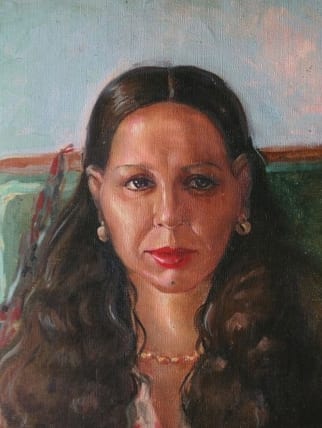
Fig1. Ibrahim El-Salahi
‘Portrait of a Woman from Egypt’, 1950-54
Oil on canvas, 31.5 x 38cm
Collection Eve El-Salahi
El-Salahi came to London from Khartoum to undertake the Diploma course in Fine Art between 1954 and 1957. Born in 1930 in Obdurman, Sudan, El-Salahi was taught by British colonial artists in the School of Design between 1949-51 at Gordon Memorial College, majoring in painting. His initial introduction to western empirical approaches to art can be seen in two portraits Portrait of a Woman From Egypt (fig. 1) and Portrait of a Young Man (fig. 2) both are dated 1950-54, the years prior to his arrival at the Slade. They are confident, vibrant paintings indicating a youthful vitality, but are also clear demonstrations of his ability to master empirical methods. This was a good grounding for his later years at the Slade, where drawing from the life-model was essential to passing exams. In some ways a residue of an academic style of art education that had been eclipsed in Europe and the US by the more experimental approaches inaugurated by the Bauhaus and the rupture of modernism with nineteenth-century academic traditions of art making. However, that academic style had flourished in the emergence of new national art colleges in the 1920s and 1930s in the countries that had been previously subsumed under the old Ottoman empire: Iraq, Syria, Jordan, and in newly emerging independent nation states of Egypt and Lebanon. In that respect, El-Salahi’s knowledge of painting and drawing from the model was not new but a well established set of techniques.
At the Slade this knowledge was furthered by contact with eminent art historians such as E.H Gombrich whose best-selling The Story of Art was the set reading for the students. Gombrich’s lectures were premised on the analysis of perception, how the eye sees and interprets objects in the external world, and how this enters into the practice of Renaissance artists.
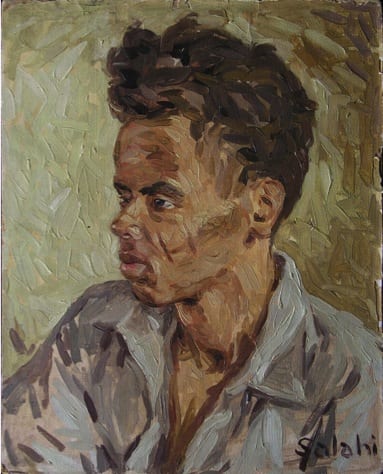
Fig. 2. Ibrahim El-Salahi
‘Portrait of a Young Man’, 1950-54
Oil on paper, 14 7/8 x 12″
Collection of Eve El-Salahi
In this respect, El-Salahi’s work developed with considerable sophistication evident in the difference between the more linear approach to his early portraits and the abandonment of line in favour of subtle tonal modulations in a work such as Portrait of a Model (1956) (fig 3). The study of light on the face is given much greater attention as to convince the spectator that the work was made with the model seated before the artist. The weightiness of her corporeality and the contingent and transitory shift of light mark it out as a more mature study. El-Salahi’s subsequent move towards calligraphy that would later mark his pioneering development towards African modernism was fostered to some degree by his regular visits to the British Museum.
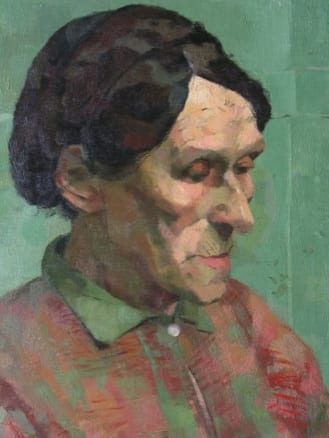
Fig. 3. Ibrahim El-Salahi
‘Figure’ (female model), 1956, Slade period
Oil on plywood board, 42.5 x 57.5cm,
Collection of Eve El-Salahi
In addition to the compulsory courses in anatomy and life drawing supplemented by art historical lectures on perception, the Slade curriculum in the 1950s also included design-based courses in lettering, in which El-Salahi excelled. Important works by him that indicate the transition from an empirical based approach to the world to one that moved increasingly towards abstraction, can be found in a painting like Church on the Hill (1956) (fig 4), a landscape painting composed largely of evenly regulated surfaces of colour, many in different tones of green, with the contrasting pinks of a terracotta or brick surface of buildings. The overall impression is closer to the grid-like structures of early Mondrian paintings but the influence of Cézanne appears to be more evident in the work.

Fig 4. Ibrahim El-Salahi, ‘Church on the Hill’, 1956,
oil on canvas, 19 ¼ x 22 7/8″ inches
Collection of Eve El-Salahi
A similar approach can be found in his painting Head (1956)(fig.5), a portrait of an elderly suited man in profile. The careful modulation of tones to denote the capturing of the model in light is pushed further so that the patches of different tones become larger and begin to break up the forms. In some respects, these points of tension between figuration and abstraction can be found in the work of artists like Matisse, Franz Macke and Ludwig Kirchner. In El-Salahi’s paintings the distortions of colour and form are reigned in but we can see indications of the later abstract paintings of the 1960s in the fragmentation of the body and surface patterns and structures that were partly created by his immersion into calligraphy.
Please tell us if you know any more of El-Salahi’s years while he was at the Slade or his early years as an artist in Khartoum in the 1950s. We’re looking for a variety of material: photographs, stories about him, letters from him if you have them and are willing to share them, any knowledge of exhibition catalogues from his early period of the 1950s or where we might get them? Please do share your memories of him as a teacher and colleague. Comments can be added publicly through the Slade Class Photos website, or write to: slade.enquiries@ucl.ac.uk or Slade Archive Project, Slade School of Fine Art, UCL, Gower Street, London WC1E 6BT.
Transnational Slade: Khalid Iqbal
By Slade Archive Project, on 9 June 2014
Khalid Iqbal
The second in a series of guest posts by Amna Malik
The Transnational Slade project is interested in the links between past students at the Slade and the impact they went on to have internationally after graduation.
Khalid Iqbal is an important example of the kind of impact Slade students were to play in their countries after studying in London. Often described as a pioneer of realist painting in Pakistan and particularly the landscape tradition, he studied at the Slade from 1952-1954 and returned to Lahore to work alongside Anna Molka Ahmed, a British artist resident in Lahore, who was invited to set up the Department of Fine Art in Punjab University. Iqbal was born in Simla on 23rd June 1929, in Kashmir under the British colonial rule of India. He grew up in Dhera Dun on the foothills of the Himalayas, and during the war was joined by a number of largely European students studying at various English public schools. His arrival in this part of India had been the result of his father’s posting in the Indian Military College. Surrounded by the natural beauty of Kashmir and then the Himalayas that might be thought to determine his subsequent career as a landscape painter, he was nonetheless inspired by a fellow student to embark on his study of art, interrupted by Partition in 1948. The ensuing bloodshed and rioting, particularly in Kashmir, led Iqbal and his family to migrate to Lahore in the Punjab.
Lahore after Partition, however, was a very different place to the cosmopolitan city of culture it had been before 1948. Many of its most vibrant artists, writers and playwrights had left for India, a number of them with Marxist leanings had settled in Bombay. The Punjab as a region had prospered a great deal under British colonial rule, with Lahore as its capital city, its Mughal heritage evident in its organisation as a garden city. By the 1930s it had become the centre for recruitment of Indian officers into the British army. This mixture of cultural and military power gave it a pre-eminence that made it central to the advocates of a Muslim-ruled nation during debates over Independence. However, its cultural eminence was severely diminished in the post-partition years. Khalid Iqbal’s decision to study at the Slade School of Fine Art in 1952 was partly the consequence of the shortage of adequate artists left to teach in Lahore. Attending the Mayo School of Arts between 1947-1948 under the guidance of Sheikh Ahmed, he graduated with a Bachelor of Arts from FC College in 1949 and gained a Diploma in French from the Oriental College in 1952.
Iqbal’s decision to come to the Slade to study was partly because of the transformed nature of the cultural world of Lahore in the immediate aftermath of Partition. Many artists of his generation in Pakistan studied in Europe in the hope of then returning and reconstructing the cultural life of Lahore, and more widely the newly formed nation. In this respect, their practices and choice of aesthetic approaches were varied but frequently tied to nation building. In Lahore this process led to what came to be known as the Lahore art group, of which Iqbal was a member, a vibrant but short lived group of artists who regularly met and exhibited together in the 1960s. We know from Stephen Chaplin’s recent interview in our Slade Oral Histories archive that Iqbal’s initial plans on arrival at the Slade were to make a close study of Impressionism and explore painting from nature, an aspect of early modernism in the mid to late 19th century that had largely disappeared.
In the early 1950s in Britain residues of the landscape tradition remained in the work of John Piper and Graham Sutherland but was radically altered by the twin influences of Cubism and Surrealism. Those most committed to it had turned to abstraction, famously in the example of Barbara Hepworth and Ben Nicholson, residing in St Ives on the Cornish coast. It was perhaps Iqbal’s good fortune that at the point at which he entered the Slade, its Professor, William Coldstream, was to embark on a lengthy and sustained revision of its teaching and structure, which was to continue well into the 1960s but had only just begun when Iqbal arrived and still privileged an empirical approach to the depiction of the external world. Stephen Chaplin, a former Slade student, and author of the Slade Archive Reader, recalls meeting Iqbal and remembering his seriousness of purpose. In her monograph on Iqbal, Khalid Iqbal, A Pioneer of Modern Realism in Pakistan (2004), the art historian Mussarat Khan explains that Iqbal was very fond of Constable and even made a visit to Dedham and the surrounding areas of Essex, often described as ‘Constable country’. Yet, she argues, despite his concern with landscape painting, and winning the Slade’s annual Steer Landscape prize, he was not inspired to make landscape paintings of the English countryside during his Slade years.
On graduation Iqbal returned to Lahore and began painting the outskirts of the city and the wider rural areas of the Punjab. We know from the vast literature on landscape painting that it is often associated with the sovereignty of vision. Indeed, the canonical examples of landscape painting in Britain have been viewed as important ways in which national identity was constructed. Yet, they are also images of private estates owned by an aristocratic elite and Iqbal’s decision to inaugurate a landscape tradition of the Punjab might be understood as a subtle reversion of that relationship of power, under the newly established state of Pakistan. To embark on a picturing of the rural parts of the country was also to authorise the new ruling elite yet his landscape paintings rarely include portraits of owners. If anything they are either empty or hint at the reconstruction of newly established buildings. There is no hint of the Mughal heritage of Lahore whilst his portrait paintings appear to be either artist-friends or ordinary people in traditional dress.
It might be useful to remember that during colonial rule the Mayo School of Arts was a school for technical draughtsmanship that trained its students to create templates of industrial and architectural design. In the immediate post-war period it emerged as a place to study the miniature tradition that is modelled on a master/apprentice form of learning. The empiricism of the English painterly tradition continued in William Coldstream’s own paintings was perhaps an opportunity for Iqbal to inaugurate a democracy of vision, whereby the optical impressions created on the artist’s eye was the basis from which his creativity might emerge, rather than one that was based on pre-existing models that subsumed the processes of seeing and making sense of the world. It is this latter, democratic vision, drawn in part from Coldstream’s example, that continues to flourish in Iqbal’s images of the Punjab.
Please tell us if you know any more of Iqbal’s years while he was at the Slade or his early years as a Lecturer at Punjab University in the 1950s. We’re looking for photographs, recollections or stories about Iqbal, letters from him if you have them and are willing to share them, and any knowledge of exhibition catalogues from his early period of the 1950s or where we might get them. Please do share your memories of him as a teacher, colleague, friend. Comments can be added publicly through the Slade Class Photos website, or you may write to: slade.enquiries@ucl.ac.uk or Slade Archive Project, Slade School of Fine Art, UCL, Gower Street, London WC1E 6BT.
Transnational Slade
By Slade Archive Project, on 3 June 2014
Transnational Slade: Mapping the diaspora of an art school
The first in a series of guest blog posts by Amna Malik
The Transnational Slade project is interested in the links between past students at the Slade and the impact they went on to have internationally after graduation. More specifically we are trying to find out how art school education has affected or impacted on the history of art in different parts of the world.
The initial aim of this project is to explore this impact of art education by examining who was at the Slade, specifically during the 1950s. This decade is important because it was a pivotal decade of change between Britain and its former colonial territories, specifically in the widening of the Commonwealth and the diminishing of the empire. It’s an era when modernism began to enter the work of artists who would play a more visible role in the Independence movements of their countries in South Asia, Africa and the Middle East. Perhaps because of the complex social and historical changes that were underway during the 1950s the art of this decade outside of France, Italy and the US remains under-examined. The presence in London of major artists of modernism created in different parts of the world has not been fully explored, perhaps because of the tendency for art history to be directed by nationalist narratives.
Within British art history we know of familiar movements such as the Bloomsbury Group, the Camden Town Group, the Euston Road School, and after the Second World War the rise of the Independent Group in the 1950s, followed by what was once seen, as British variants on artistic styles, US movements, such as post-painterly abstraction, Pop and land art. We are all aware of the contributions of Moore, Bacon, Sutherland and Hepworth to modernism. In recent years our knowledge of modern and postmodern artists from Britain has widened, including the presence of artists of the African and Asian diaspora, some of them gathered together in Rasheed Araeen’s exhibition The Other Story (1989). The Slade’s position within this history of twentieth century art has tended to arise in the context of Wyndham Lewis and the Vorticists, from 1914 onwards. It is largely examined as a backdrop to the rising stars of figurative painting in the 1950s: Frank Auerbach, Leon Kossoff, Lucien Freud and later Ewan Uglow.
Transnational Slade, as the name indicates, brings to light the presence in London of artists from numerous parts of the world: Egypt, Jordan, Syria, Pakistan, Sudan, India, Bangladesh, China, Thailand, South Africa, Canada, Tanzania, Ethiopia, New Zealand, Indonesia, Guyana and Vietnam, to name only a few. While some of these artists have subsequently become well known – for instance Sam Ntiro, Khalid Iqbal, Ibrahim El-Salahi and Skunder Boghossian – all became central to the development of modernism in their countries. The work of other artists has received less attention and is yet to be recognised. We are interested in finding out more about these artists.
Two case studies have been compiled of contrasting artists: Khalid Iqbal is well known in Pakistan as a teacher and pioneer of landscape painting in the realist tradition; we know less about his period of study at the Slade. If you studied with him or knew someone who did, please tell us more. Ibrahim El-Salahi was the subject of a touring retrospective curated by Professor Salah Hassan that came to London’s Tate Modern in summer 2013. Whilst Iqbal’s engagement with the empirical tradition of British art was fundamental to his subsequent career, for El-Salahi it proved to be a starting point for a different direction. As Sudan and other African countries moved towards independence in the 1960s, his work changed in direction, away from painting from the model towards an abstract language influenced by Arabic calligraphy and African tribal sculpture.
These artists have been chosen because they offer contrasting positions in relation to the European canon. Iqbal adapted the empirical realist techniques he learnt at the Slade to depict the outskirts of Lahore in an era of national renewal. His interest in this empirical approach can perhaps be seen as an example of the way modernism adapted and changed in different local contexts. In his case it seems to have been a rejection of the tradition of miniature painting native to Lahore. In this respect, it can also be seen as a rejection of the Mughal styles of art favoured by the British Raj. El-Salahi’s early formation as an artist was in the empirical tradition of drawing and painting from the model, which he continued at the Slade, but radically departed from in subsequent years. Both artists have been highly influential to the development of modernism in their respective countries. They are indicative of the transformative nature of modernism in the twentieth century, as artists responded to local conditions and situations of art making in different parts of the world.
By making Slade class photographs available online we hope that Transnational Slade, through your contributions, will further our, currently, largely Eurocentric knowledge of art history, the place of art under the umbrella of the Commonwealth, and the place of art in the history of national Independence movements. These are just a selection of artists we have come across in our archives who were students at the Slade during the 1950s: Ibrahim El-Salahi A.M. El Din Guneid and Baghdadi Bastawi from Sudan, Sam Joseph Ntiro from Tanganyika (now Tanzania), Arthur Albert Adams and Mary Chappe Sutton from South Africa, Yu Tseng, Chien-Ying Chang, C.W. Fei and Deh-ta Hsiung, from China, Krishna Gosajeni from Thailand, Sinclair Healy from Canada, Jamila Zafar, Khalid Iqbal and Anwar Shemza from Pakistan, Kamalendu Roy, Ameena Ahmed and Kalpathi Ganapathy Subramanyam from India, Jack Cripper and Desmond Digby and James Robson Cowan, otherwise known as Roy Cowan from New Zealand, Warrington Colescott from the US, Surya Antonius from Jordan, Koesoema Affandi from Indonesia, Batil T. Patwa from Kenya, Menhat Allah Helmy from Egypt, Van-my or Phan-Van-My Phan from Vietnam, Skunder Boghossian from Ethiopia, Kim Lim from Singapore.
We’re also looking for a variety of material about these individuals: photographs, stories of your impressions of them, letters from them during their years in London if you have them and are willing to share them, any knowledge of exhibition catalogues or information on where we might get them. Please share with us your memories of these artists as teachers, colleagues, friends. Comments can be added publicly through the Slade Class Photos website, or you may write to: slade.enquiries@ucl.ac.uk or Slade Archive Project, Slade School of Fine Art, UCL, Gower Street, London WC1E 6BT.
 Close
Close



